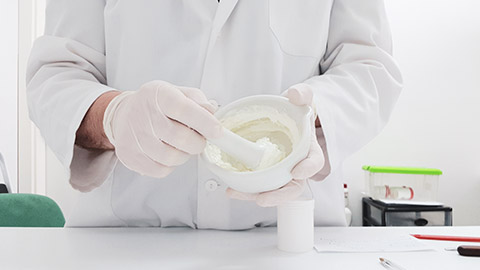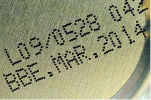Introduction
Nau mai, hoki mai, welcome back to another week with the spotlight on communication. In this week's communication session, we'll revisit communication “channels”, which you may remember from previous lessons. This time, however, we'll consider it from the viewpoint of pharmacy technicians communicating and collaborating with the healthcare professionals encountered in their daily tasks.
Communication channels
Communication channels refer to the various methods or avenues through which information is exchanged between individuals or groups. In the context of communication skills, understanding different communication channels is essential for effective interaction.
This graphic illustrates the four main communication channels that pharmacy technicians may use in their everyday work.
Let's look at each one.
Verbal communication
This refers to direct conversation or speech, such as face-to-face discussions with colleagues or phone calls with healthcare professionals. It can encompass formal interactions, such as professional meetings, and informal exchanges, such as conversations and information sharing related to work duties.
Non-verbal communication
All communication without the use of words is called "non-verbal" and includes body language, facial expressions, tone, pace and gestures that convey emotions, attitudes, and intentions. It occurs in both face-to-face and non-face-to-face interactions.
Written communication
This involves the exchange of information through written means, such as emails, memos, or handwritten notes, for documentation and correspondence. This channel of communication often uses electronic devices and platforms, including text messaging, instant messaging apps, or video conferencing tools for remote discussions. Written communication is characterised by its structured and often permanent nature, enabling information to be preserved and referenced over time.
Visual communication
This type of communication is about the presentation of information through visual aids like charts, graphs, diagrams, or posters to enhance understanding and clarity. It relies on images, symbols, and graphics to convey messages and support understanding.
Forum activity
Communication channel demonstration
Can you identify the different communication channels that you see used in the workplace?
- Scroll up to the top of the page to have a look at the photo at the start of this week’s session. Here, we see two healthcare professionals collaborating.
- Share your answers to the following questions in the class forum: Week 38 – PP 2: Communication channel demonstration.
- What communication channels do you see being used in the photo?
- What do you think are the benefits of this communication channel?
- Once you’ve posted your thoughts, read your classmates’ posts.
Choosing the best communication channel
Selecting and combining the different communication channels can impact communication effectiveness and collaboration between health professionals. Combining communication styles is something we do naturally, but in our industry, you may want to do it more intentionally.
Examine the communication channels you naturally combine and consider which channel you may try to enhance to ensure your message is delivered accurately. Consider the context of communication, i.e., there is no sense in using body language on a phone call, but you probably can’t help it. Are there other channels you can enhance because of a lack of eye contact and body language?
Certain types of information may be better suited for specific communication channels. By evaluating the attributes and requirements of each channel, you can select the most suitable option to facilitate clear and effective communication in the workplace.
Activity
Selecting Communication Channels
- Complete the following documentation tool before consulting the examples below to test your knowledge, experience, and critical thinking abilities. Participating in this learning challenge will deepen your comprehension and memory of the content.
- Once you’ve finished, save the document to an easy-to-find location on your device.
Check your answers
Select the (+) symbol to compare your answers for each communication channel. As you read, take extra note of any information you may have missed.
Pharmacy technicians might choose this channel to communicate complex instructions or discuss detailed patient information requiring immediate clarification or feedback.
This communication channel is also used during face-to-face interactions with healthcare professionals to discuss treatment plans, medication changes, or patient care coordination, and when conducting phone calls to consult with doctors or nurses regarding patient prescriptions, medication dosages, or adverse reactions.
Advantages:
- Allows for immediate feedback, clarification, quick resolution of queries or issues and exchange of information.
- Helps build rapport and trust through direct human interaction, fostering stronger professional relationships.
- Helps with addressing sensitive issues where tone of voice and intonation can help convey empathy and understanding.
Disadvantages:
- It relies on the availability and location of both parties, which may not always be feasible in busy healthcare settings.
- Verbal agreements or instructions may not be recorded, leading to potential misunderstandings.
Pharmacy technicians might choose this channel for face-to-face interactions to support verbal communication.
Advantages:
- Non-verbal cues such as body language, facial expressions, and gestures can convey emotions, attitudes, and intentions, enhancing the understanding and trust between parties.
Disadvantages:
- Non-verbal cues may vary based on individual perceptions and cultural backgrounds, leading to potential misunderstandings.
Pharmacy technicians might choose this channel when face-to-face or verbal communication is not feasible. It is also used to document patient information, medication orders, or treatment plans in electronic health records or pharmacy management systems.
Advantages:
- Allows for precise and structured communication, reducing the likelihood of misinterpretation.
- It can be stored and archived for future reference, ensuring information remains accessible over time.
- Allows recipients to access and review information at their convenience.
- It is suitable for formal communications with healthcare professionals, such as emails or memos.
Disadvantages:
- It may not allow for immediate clarification or feedback, leading to delays in decision-making or problem-solving.
- It may be misinterpreted due to differences in tone, emphasis, or language proficiency.
- Composing written messages may require more time and effort compared to verbal communication, particularly for complex or detailed information.
Pharmacy technicians might choose this channel to enhance other communication channels, ensuring clarity and understanding regarding specific medical conditions, treatment procedures, medication administration techniques, and other patient care matters with healthcare professionals.
Advantages:
- Visual aids such as charts, diagrams, or images can enhance understanding and simplify complex information during collaboration and information sharing.
- It can be used during face-to-face, written and virtual communication.
Disadvantages:
- Relies on access to appropriate technology and tools and preparation time for creation and presentation. This may not always be available or accessible.
- It is dependent on the audience's ability to interpret visual cues such as graphs and data tables effectively.
Factors to consider
In summary, when a pharmacy technician selects a communication channel for interaction with another health professional, they should consider seven factors:
- Urgency: The immediacy of the message and whether a real-time response is required.
- Complexity: The complexity of the information being conveyed and whether it can be effectively communicated through the chosen channel.
- Confidentiality: The sensitivity of the information and whether the chosen channel ensures privacy and confidentiality.
- Convenience: The accessibility and ease of use of the communication channel for both parties involved.
- Professionalism: The appropriateness of the channel in maintaining a professional manner and adhering to workplace standards
- Compatibility: The chosen channel's compatibility with the recipient's preferences and technological capabilities.
- Documentation: The need for documentation and whether the chosen channel allows for proper record-keeping and documentation of the communication.
Telephone skills

One of the communication channels used in pharmacy practice is the trusty telephone. As it’s likely that you will have seen your colleagues using the telephone in your work placement, take a few minutes now to create a list outlining why pharmacy technicians might use the phone when collaborating with other healthcare professionals in their daily work.
When you're ready, select the (+) icon below.
Pharmacy technicians may use the phone to:
- Respond to specific medicine enquiries, such as instructions for administration, dosage, ingredients and interactions.
- Enquire about medication costs, funding and subsidy cards.
- Enquire about the pharmacy’s services, such as compliance packaging and International Normalised Ratio (INR) monitoring.
- Find out the names of medicines and OTC products currently available on the market.
- Make enquiries about stock availability.
Journal post
Telephone Communication
Your approach to answering the phone will differ from your personal life in a professional setting. In this tūmahi (activity), we will explore this difference.
- Complete the following Documentation Tool activity.
- Create a new journal post titled ‘Telephone Communication’.
- Upload the completed activity to your post.
- Save the permalink to your Index of Journal Posts.
- Remember to check back on the activity for tutor feedback.
How did you go with that activity? Hopefully, it gave you an opportunity to think critically about the content and language choices when communicating with healthcare professionals.
As you know, reflection is a critical skill for self-development. Take a moment now to consider the following:
- Did you answer the call with your name and job title? Why or why not?
- What was your tone like? Was it friendly?
- Did you ask Fred if he had any more questions before ending the call?
Based on your answers to these questions, read through the activity again and identify any points you would change.
Key points
In summary, the following are important key points for communicating and collaborating with healthcare professionals using the telephone:
- Professional greetings
- Active listening
- Clarifying
- Respectful communication and professional tone
- Clear and concise communication
- Confidentiality
- Ending the call professionally.
Kia haere tonu tatou, let’s continue to explore examples for each of these points.
Professional greetings
Answer the phone with a professional and courteous greeting, for example:
- "Good morning, Happy Valley Pharmacy. This is Benita speaking. How may I assist you?"
- Greetings may also include your job title, “Kia ora, this is pharmacy technician, Benita speaking.”
- Your pharmacy may have a preferred way they like staff to answer the phone. If you’re unsure, ask your supervisor or observe your colleagues’ telephone manners.
Active listening
Listen attentively and empathically to the caller's needs. This may involve:
- Using verbal feedback signals of listening such as “Yes”, “Mmm”, “OK”, and “Uh-huh”.
- Repeating, paraphrasing or summarising what the caller has said.
- Acknowledging any emotions expressed by the caller.
Clarifying
Ensure mutual understanding by confirming information and addressing any uncertainties. This may involve:
- Asking probing questions: "Could you please provide more details about...?"
- Seeking confirmation: "Just to confirm, are you asking about...?"
- Requesting repetition: "I'm sorry, could you repeat that?"
- Clarifying understanding: "So if I understand correctly, you're saying...?"
- Offering options: "Would you like me to clarify anything else?" or "Is there anything specific you need more information about?"
Respectful communication and professional tone
- Maintain a professional, friendly and courteous tone throughout the call.
- Wait to respond to the caller once the caller has finished talking. Don’t talk over them.
- Pause to allow time for the caller to respond to questions or comments.
Clear and concise communication
- Speak clearly and at a pace that the caller can understand. For example, you may realise that they have hearing challenges or speak English as a second language.
- Use concise language to convey information effectively. This includes avoiding unnecessary technical jargon.
Confidentiality
Be mindful of patient confidentiality and avoid discussing sensitive information over the phone where the public can overhear you.
End the call professionally
Thank the caller as appropriate and help with any further enquiries before ending the call politely. This may involve:
- Providing the caller with the opportunity to ask more questions: "Thanks for your call. Before you go, do you have any extra questions about...?"
- Using a friendly tone: "If you ever have questions in the future, don't hesitate to give us a call. Have a great day [caller's name]!"
Listen
Whakarongo to some of these key points in action and check to see if you can identify what telephone skills are being used in this 10-question pātaitai (quiz).
Click the play button to hear each example.
Self-directed learning activities
To support and enhance your communication learning, complete the following activities. As you carry out these activities, you may like to note key points or skills you would like to work on.
Activity 1
It's important to think about not only how you communicate but also the way in which you communicate.
As you watch the following video, consider how you use different communication channels in different pharmacy settings. Then, answer the reflection questions in the class forum: Week 38 - PP2: SDL1.
Watch: Communication Channels (7 minutes)
Questions
- In your opinion, how does the choice of communication channel impact the outcome of a conversation or interaction?
- Can you recall a personal experience where the choice of communication channel played a significant role in the outcome of a situation? Describe it briefly.
Activity 2
In the current world of texting, emailing, and using social media, the prospect of using the phone can be daunting and anxiety-inducing for some people.
As we want to support and empower each other and ourselves, sharing examples and strategies to overcome this fear can help to build confidence and professionalism in our phone skills.
- Pānui (read) this article from Mind Tools for some brilliant advice: Making a Phone Call: Communicating Confidently and Professionally Over the Phone.
- Share the following in the class forum: Week 38 - PP2: SDL2. Note: If you struggle to think of examples to share, you can use examples from outside the workplace.
- An example of a time when you had a positive experience on a phone call and what you (or the other person) did to ensure the call was confident and professional. For example, "I recently had to call a customer to follow up on some unanswered queries they had made with a colleague. Before I rang, I wrote out notes with the customer's name, their questions and some extra information that I thought might be helpful for them."
- An example of a time when you had a negative experience on a phone call and what you (or the other person) could do differently next time to ensure the call is professional. For example, "I once rang a supplier to confirm stock availability. They didn't answer the phone, so I chose to leave a voice message. However, when I went to say my phone number (to call me back on), I couldn't remember it and hung up! As I tend to panic easily on the phone, next time, I will definitely write some notes to remind myself of everything to say in the case that I need to leave a voice message."
- Check out your classmates' posts and respectfully comment on at least one example that resonates with you. You may like to suggest a tip/ strategy that they could use to improve the experience next time or note a strategy that they used well and that you would like to practice in the future.
Whakimihi, congratulations. That brings us to the end of this session on communicating with other health professionals. We have discussed the various channels with a focus on communicating via telephone. In our upcoming session, our focus will shift to email communication.

Fakaalofa atu, hello and welcome back to Dispensing 2. In this session, we continue our exploration of non-aseptic compounding (ironically, beginning at the end) with expiry dates.
Expiry dates

Expiry dates indicate the period during which an extemporaneously compounded medicine is expected to remain stable and effective when stored under appropriate conditions.
Standard formula
The expiry date is taken from the standard formula. In situations where there is no standard formula for a specific medicine or preparation, the pharmacist will assign an expiry date based on pharmaceutical resources, data, and best practice guidelines.
A standard formula will state whether a preservative is needed or not. Preservatives help prolong the shelf-life of the compounded product by inhibiting microbial growth.
Oral liquids
General guidelines for oral liquids without a standard formula are:
- Without preservatives: 7 days
- With preservatives: 1 month.
External use
General guidelines for external use where there is no formula or stability data:
- Maximum of between 1- 3 months.
Freshly prepared
As a guide to good pharmaceutical practice, it is suggested that mixtures or other medicines recommended to be “freshly prepared” should be prepared not more than 24 hours before issuing to a patient.
Recently prepared
These should be stored in full, airtight, unopened bottles in the pharmacy for no longer than three months. Stock in open containers should be used within two weeks of the first opening.
Check your dates!
Feel like you're going to expire after reading that? Don't worry. Complete this four-question pātaitai (quiz) to check your retention of all things dated.
Terminology recap
In class, you will discuss and practice five different compounding techniques. However, before we look at each one, let’s recap three important terms.
You know the drill! Test your knowledge of each term and jot down the answer on a scrap piece of paper before using the (+) symbol to expand each whakautu (answer). Make sure to watch the short video for each term to visualise the technique in action.
- This technique involves grinding, crushing, or pulverising solid materials into smaller particles or powders using a mortar and pestle.
- This repetitive grinding action helps to break down larger particles into finer particles, resulting in a more uniform and homogeneous mixture.
- It is used when preparing medications such as powders, ointments, creams, and suspensions, where the consistency and potency of the final product depend on the thorough mixing and dispersion of ingredients.
Watch: Compounding Tips: Trituration (1:44 minutes)
Mātakitaki, watch the following demonstration to help you to visualise this.
- This technique involves adding small amounts of one ingredient at a time to a larger quantity of another ingredient while continuously mixing or triturating them together.
- By gradually incorporating smaller portions of the second ingredient into the larger one, geometric dilution ensures thorough mixing and prevents the separation of particles.
- It is used to prepare active ingredients that require precise and homogeneous dispersion in a formulation.
Watch: Compounding Tips: Geometric Dilution (4:33 minutes)
- This technique typically involves triturating the solid substance with a small amount of liquid (usually a solvent or vehicle) using a mortar and pestle until a smooth paste or suspension is formed.
- The resulting mixture can then be incorporated into a formulation more easily, ensuring uniform distribution of the solid particles.
- It is used when incorporating solid substances into ointments, creams, or suspensions where particle size reduction is necessary to achieve the desired consistency and stability.
Watch: Terminology – Levigation (3:25 minutes)
As you watch this tutorial on YouTube (the owner has disabled playback on other websites), āta whakarongo, listen carefully and note each step in this process. Terminology - Levigation.
Overview of compounding techniques
Haere whakamua, moving ahead, let’s explore the five compounding techniques that we touched on earlier. This information will provide you with the theoretical and foundational knowledge that you can connect with when you practice each technique in class.
| Technique | Method | Equipment | Example |
|---|---|---|---|
| Mixing two or more miscible liquids: | This process involves accurately measuring the volumes of each liquid ingredient and combining them in a suitable container. |
|
|
| Dispersing or dissolving a solid in a liquid: | This process involves gradually adding a solid substance to a liquid while stirring continuously to facilitate dissolution or dispersion. |
|
|
| Preparing a suspension using a mortar and pestle: | A solid substance is triturated (ground or powdered) in a mortar using a pestle to reduce particle size. The powdered solid is then gradually incorporated into a liquid vehicle while continuously mixing to prevent clumping and ensure uniform dispersion. |
|
|
| Powdering a solid in a mortar and pestle: | Place the solid substance into the mortar and use the pestle to grind and pulverise it into a fine powder. |
|
|
| Preparing an ointment or cream by incorporating an active ingredient using an ointment slab and spatula: | The active ingredient is triturated and then incorporated into a suitable base, such as a petrolatum or water-based cream, on an ointment slab. The mixture is blended thoroughly using a spatula until a homogeneous consistency is achieved. |
|
|
Self-directed learning activity
Compounding Processes
This week, you will need to pop your rangahau (research) hat back on to complete this tūmahi (activity).
- Create a new journal post, ‘Compounding Processes’.
- Imagine that you're working as a pharmacy technician and read the following instructions for a compounding technique: “Place weighing paper of scales and TARE.”
- In your journal, explain what TARE means and why this action is carried out.
- Publish your post to ‘All course users’.
- Save the permalink to your Index of Journal Posts.
He mahi pai! Great job! You’ve reached the end of Week 38 and our exploration of non-aseptic compounding. In our next session, we'll delve into the world of aseptic compounding.
